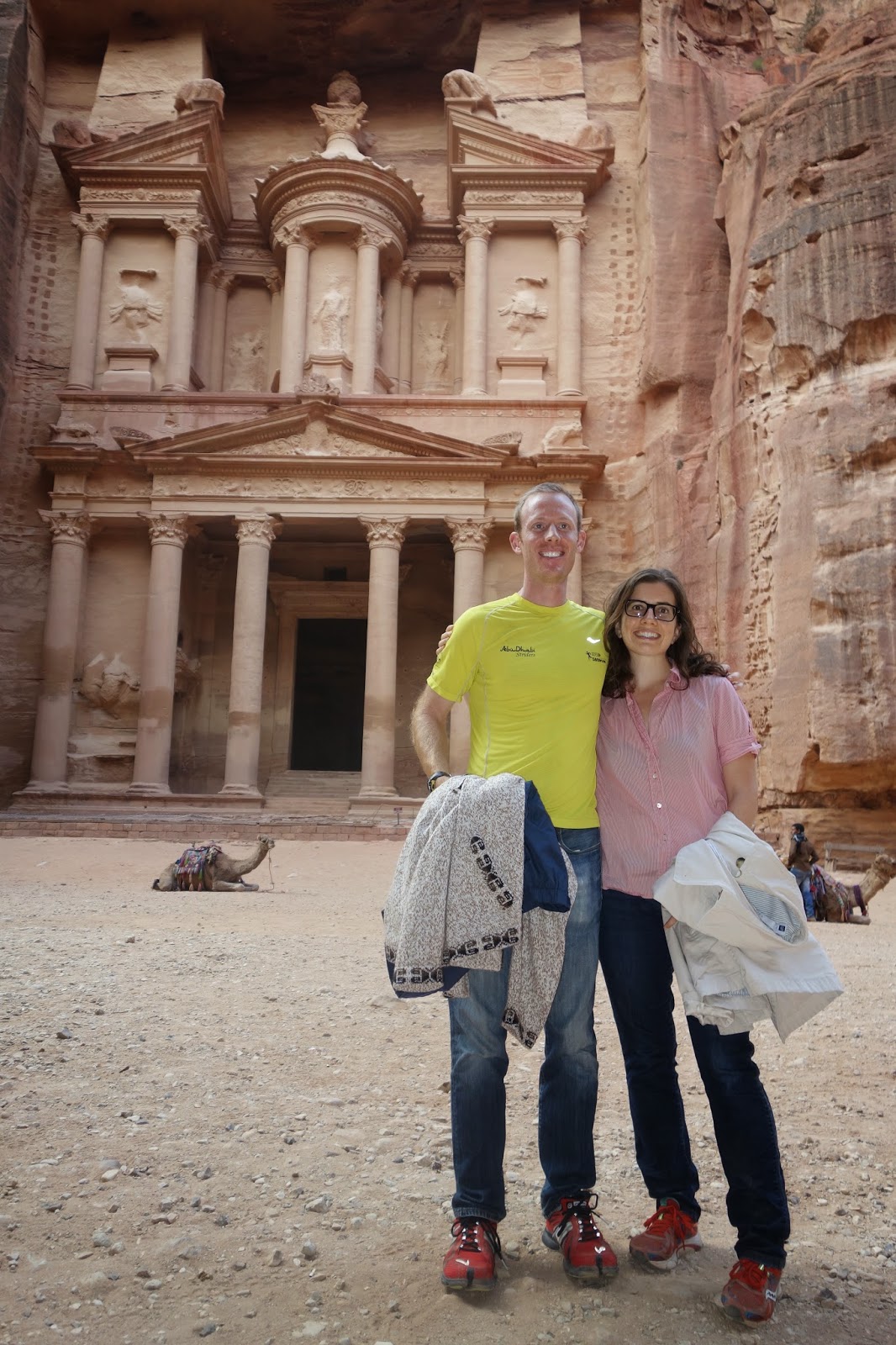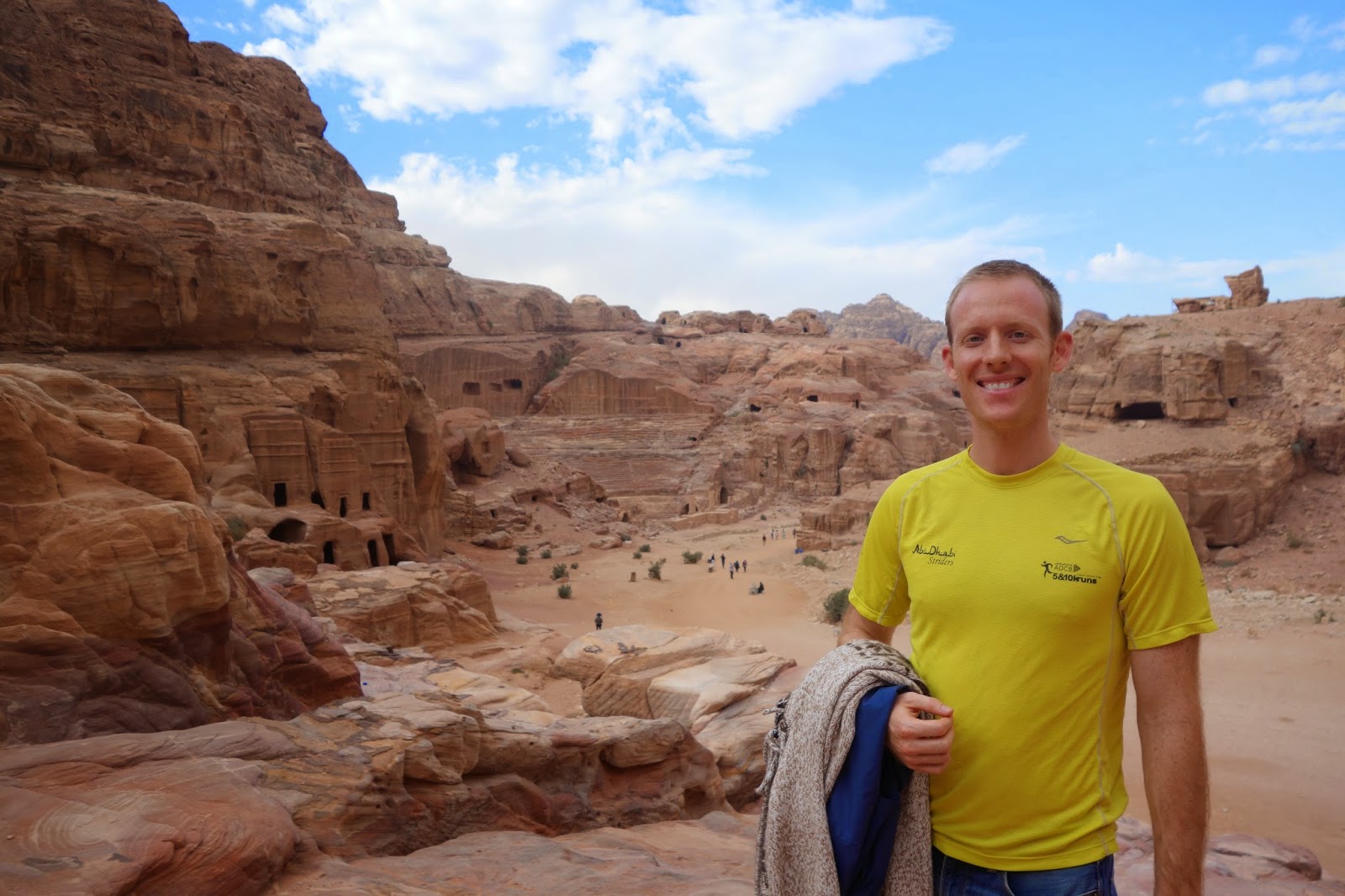Our final night in Jordan was spent in Amman, the largest city and capital of Jordan. We drove in on a Friday afternoon, after the Friday afternoon prayer and when all the souqs burst to life. Our technology let us down for the first time during the trip, and between our confusion and heavy traffic, it took us a very long time to find our hostel in the old part of city. (Very old - we had a view of a Roman theater from our room!)
After taking a few minutes to recover, we went to Hashem Cafe, one of the most famous restaurants in Amman. It is one of the royal family's favorite haunts. We didn't see any kings or queens while we were there, but did consume an enormous plate of bite-size felafel.
Afterwards, we wandered around to the various souqs. We bought a little of the famous Middle Eastern "seven spice mix," which can apparently consist of more than seven spices, but definitely includes black and white pepper, cinnamon, cloves, allspice, coriander and nutmeg. The ingredients are blended together, and are best (so we're told) on meat, rice dishes, and bread.
We capped off the night with very sweet tea in a quiet park.
After taking a few minutes to recover, we went to Hashem Cafe, one of the most famous restaurants in Amman. It is one of the royal family's favorite haunts. We didn't see any kings or queens while we were there, but did consume an enormous plate of bite-size felafel.
Afterwards, we wandered around to the various souqs. We bought a little of the famous Middle Eastern "seven spice mix," which can apparently consist of more than seven spices, but definitely includes black and white pepper, cinnamon, cloves, allspice, coriander and nutmeg. The ingredients are blended together, and are best (so we're told) on meat, rice dishes, and bread.
We capped off the night with very sweet tea in a quiet park.
































